410-721-2273
Fever
What is a fever?
A fever means the body temperature is above normal. Your child has a fever if his:
- Rectal temperature is over 100.4°F (38.0°C).
- Oral temperature is over 99.5°F (37.5°C).
- Axillary (armpit) temperature is over 99.0°F (37.2°C).
- Ear (tympanic) temperature is over 100.4°F (38°C). (This measuring method is not reliable for babies under 6 months old.)
- Pacifier temperature is over 100°F (37.8°C). (The pacifier thermometer works well for babies over 3 months old.)
Tactile (touch) fever is the impression that your child has a fever because he feels hot to the touch. Checking a fever this way is more accurate than we used to think. But if you're going to call the doctor, use a thermometer to measure the fever.
The body's average temperature when it is measured orally is 97.6°F (36.5°C). Oral temperature normally can change from a low of 95.8°F (35.5°C) in the morning to a high of 99.4°F (37.5°C) in the afternoon. Mildly increased temperature (100.4 to 101.3°F, or 38 to 38.5°C) can be caused by exercise, heavy clothing, a hot bath, or hot weather. Warm food or drink can also raise the oral temperature. If you suspect such an effect on the temperature of your child, take his temperature again in a half hour.
What is the cause?
Fever is a symptom, not a disease. It is the body's normal response to infections. Fever helps fight infections by turning on the body's immune system. Most fevers (100 to 104°F, or 37.8 to 40°C) that children get are not harmful. Most are caused by viral illnesses such as colds or the flu. Some are caused by bacterial illnesses such as Strep throat or bladder infections. Teething does not cause fever.
How long will it last?
Most fevers with viral illnesses range from 101°F to 104°F (38.3°C to 40°C) and last for 2 to 3 days. In general, the height of the fever doesn't relate to the seriousness of the illness. How sick your child acts is what counts. Fever does not cause permanent harm. Brain damage occurs only if the body temperature is over 108°F (42°C). Fortunately, the brain's thermostat keeps untreated fevers well below this level.
While all children get fevers, only 4% develop a brief seizure from the fever. This type of seizure is generally harmless, but a child who has a febrile seizure should always be checked by a healthcare provider. If your child has had high fevers without seizures, your child is probably safe.
How can I take care of my child?
- Extra fluids and less clothing
Encourage your child to drink extra fluids, but do not force him to drink. Popsicles and iced drinks are helpful. Body fluids are lost during fevers because of sweating.Bundling can be dangerous. Clothing should be kept to a minimum because most heat is lost through the skin. Do not bundle up your child; it will cause a higher fever. During the time your child feels cold or is shivering (the chills), give him a light blanket.
If the fever is less than 102°F this is the only treatment needed. Fever medicines are not necessary.
- Medicines to reduce fever
Remember that fever is helping your child fight the infection. Fevers only need to be treated with medicine if they cause discomfort. That usually means fevers above 102°F (39°C).
These medicines start working in about 30 minutes, and 2 hours after they are given, these drugs will reduce the fever 2°F to 3°F (1°C to 2°C). Medicines do not bring the temperature down to normal unless the temperature was not very high before the medicine was given. Repeated dosages of the drugs will be necessary because the fever will go up and down until the illness runs its course. If your child is sleeping, don't awaken him for medicines.
- Acetaminophen: Children older than 3 months of age can be given acetaminophen (Tylenol). Give the correct dosage for your child's weight every 4 to 6 hours.
- Ibuprofen: Ibuprofen (Advil, Motrin) is similar to acetaminophen in its ability to lower fever. Its safety record is also similar. The FDA has approved it for infants over 6 months of age. One advantage ibuprofen has over acetaminophen is a longer lasting effect (6 to 8 hours instead of 4 to 6 hours). Children with special problems requiring a longer period of fever control may do better with ibuprofen. Give the correct dosage for your child's weight every 6 to 8 hours.
- CAUTION: The dropper that comes with one product should not be used with other brands.
- Avoid aspirin: Doctors recommend that children (through age 21 years) not take aspirin if they have any symptoms of a cold or viral infection, such as a fever, cough, or sore throat. Aspirin taken during a viral infection, such as chickenpox or flu, has been linked to a severe illness called Reye's syndrome. If you have teens, warn them to avoid aspirin.
- Sponging is usually not necessary to reduce fever. Never sponge your child without giving him acetaminophen or ibuprofen first. Sponge immediately only in situations such as heatstroke, delirium, a seizure from fever, or any fever over 106°F (41.1°C). In other cases sponge your child only if the fever is over 104°F (40°C), and hasn't come down when you take the temperature again 30 minutes after your child has taken acetaminophen or ibuprofen. Until acetaminophen or ibuprofen has taken effect (by resetting the body's thermostat to a lower level), sponging will just cause shivering which is the body's way of trying to raise the temperature.
- If you do sponge your child, sponge him in lukewarm water (85 to 90°F, or 29 to 32°C). Use slightly cooler water for emergencies. Sponging works much faster than immersion, so sit your child in 2 inches of water and keep wetting the skin surface. Cooling comes from evaporation of water. If your child shivers, raise the water temperature or stop sponging until the acetaminophen or ibuprofen takes effect. Don't expect to get the temperature down below 101°F (38.3°C). Don't add rubbing alcohol to the water; it can be breathed in and cause a coma.
Medicines for Fever or Pain Relief
Acetaminophen
Acetaminophen (Tylenol) is available without a prescription. Determine the correct dosage by finding your child's weight in the top row of the table. You may repeat the dosage every 4-6 hours as needed. Do not give acetaminophen more than 5 times a day. Do not use acetaminophen in children under 3 months of age. If your infant has a fever during the first 12 weeks of life, see your child's healthcare provider.
Suppositories: Acetaminophen is also available as a rectal suppository in 120-mg, 325-mg, and 650-mg dosages. Suppositories are useful if a child with a fever is vomiting often or having seizures caused by the fever. Use the same dose as listed above for the suppository. Most suppositories can be cut (for example, cut in half) to supply the right dose for your child's age.
Ibuprofen
Determine the correct dosage by finding your child's weight in the top row of the table. You may repeat the dosage every 6 to 8 hours as needed. Note that some medicines come with a 1.25 ml dropper and others come with a 1.875ml syringe. Don't let the dropper/syringe difference confuse you. The milligram amount you should give is the same. Do not give ibuprofen to children under 6 months of age.
Alternating or Combining Acetaminophen and Ibuprofen
If instructed by your healthcare provider to alternate ibuprofen and acetaminophen, do it as follows:
- Alternate doses of ibuprofen and acetaminophen every 4 hours.
- Alternate medicines for only 24 hours or less, then return to a single product.
Combining acetaminophen and ibuprofen is generally not recommended. Combining can cause confusion, dosage errors, and poisoning.
Avoid Aspirin
Children (through age 21 years) should not take aspirin if they have chickenpox or influenza (any cold, cough, or sore throat symptoms). This recommendation is based on several studies that have linked aspirin to Reye's syndrome, a severe encephalitislike illness. Most pediatricians have stopped using aspirin for fevers associated with any illness.
Call 911
Call our office immediately if:
(410) 721-2273
- Your child is less than 3 months old.
- The fever is over 104°F (40°C) and has not improved 2 hours after giving fever medicine.
- Your child looks or acts very sick (fever along with severe headache, confusion, stiff neck, trouble breathing, rash, or refusing to drink).
Call us within 24 hours if:
- Your child is 3 to 6 months old (unless the fever is due to a DTaP shot).
- Your child has had a fever more than 24 hours without an obvious cause or location of infection AND your child is less than 2 years old.
- Your child has had a fever for more than 3 days.
- The fever went away for over 24 hours and then returned.
- You have other concerns or questions.
Written by B.D. Schmitt, MD, author of "Your Child's Health," Bantam Books.
This content is reviewed periodically and is subject to change as new health information becomes available. The information is intended to inform and educate and is not a replacement for medical evaluation, advice, diagnosis or treatment by a healthcare professional.
You May Also Like
Popular Resources | Make an Appointment • Locations • Refill Prescriptions





